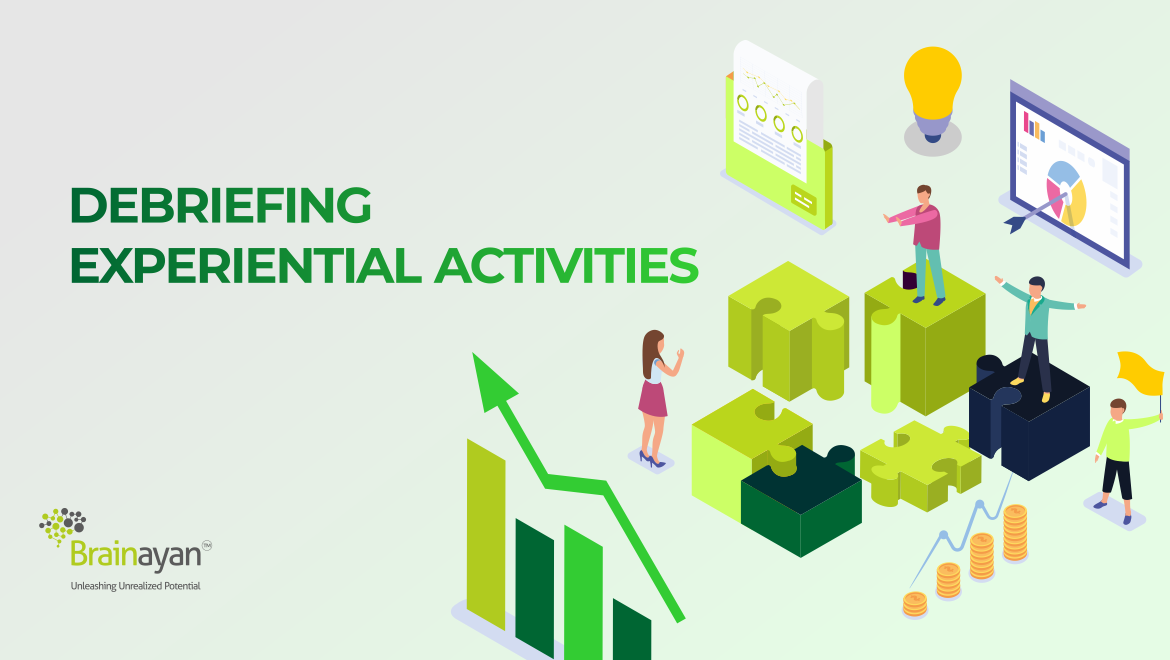One of the asks clients have for learning programs is to make them experiential. In other words, they are suggesting that learners can’t sit in a chair and focus on the content and discussions and learn. Make them get up and do things and they will be engaged. That leads to learning programs having experiential activities aka games. Frequently, these games are become entertaining breaks, sort of a competition that also has fun prizes blah and the balance quickly tilts in favor of fun, rather than learning. As a facilitator of a learning experience, it’s a challenge to make sure people are having a lot of fun but not at the cost of learning.
To ensure experiential activities don’t just turn into fun time, here are a couple things we should not lose sight of:
The purpose: Why is this activity/game being used? It’s okay to insert it to address the challenge of learner energy, to get them moving. But that’s not the purpose of the activity. The purpose has to be a learning goal. What are we trying to teach the learners through this activity? Is the activity achieving the goal?
The analogy: The game is always an analogy for work experiences. As facilitators, we should pay attention to the analogy and see how far it can be stretched. Being able to exploit the game fully to unpack various aspects of a work experience, challenges associated with it, and how to address them is the goal of the learning experience. Prepping ahead of time, having a plan for unpacking the analogy, and associating key teaching points with the various aspects of the analogy can make the debrief effective.
The teaching points: It’s useful to consider if any teaching points will need any teaching aids – slides, drawings, posters, videos. As you reach a teaching points, quickly shifting to the teaching aid, nailing the teaching point and moving on with the debrief keeps the learning moving forward. Taking this approach ensures that the game is not eating into your teaching time. It is the teaching time.
Observations: Observing the game closely and making notes helps a rich debrief. The observations have to be informed by the points but they also have to lead to unplanned learning opportunities and as observers, we have to spot them and note them to uplevel learning.
Developing flexibility: The challenge an activity debrief poses is that you cannot guarantee the flow of topics. As you invite learners to share their observations, the flow of teaching points can be unpredictable. What’s required is being able to keep a track of the teaching points, organizing the points where necessary and possible in the flow you want, moving back and forth between teaching aids, ensuring all teaching points are being addressed, and fully utilizing any new learning opportunities beyond the plan. The debrief should be fun and open conversations going back to the game, unpacking the conflicts and collaboration, mindsets and behaviors.
Sometimes, a lesson plan can just be really insightful games one after the other where the debrief just culls out all the learning. If the facilitator knows how to dance in the moment and still organize the learning, you don’t need a lesson plan or a PowerPoint presentation. You can create a memorable learning experience just through engaging experiential activities.
A Word of Caution: As you unpack the analogy fully, you can get into conversations that may look trivial or not directly relevant to learners and their energy can start waning. Keep an eye out for the impact on learners and decide if you should double click or keep going with a particular part of the debrief. Also, sometimes, as learners apply the analogy to their work environment, they may be talking language or context that you are not familiar with. Paraphrasing and ensuring you are on the same page keeps the debrief on track.
All the best, amigos! Go ahead and have fun with your experiential activities and their rich debrief.

